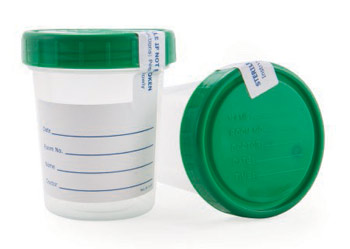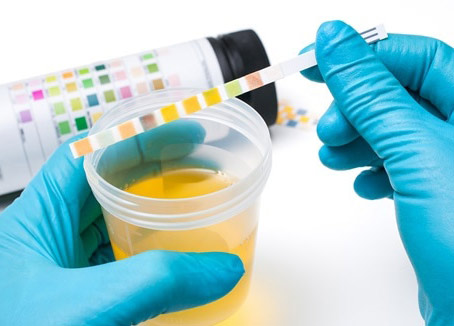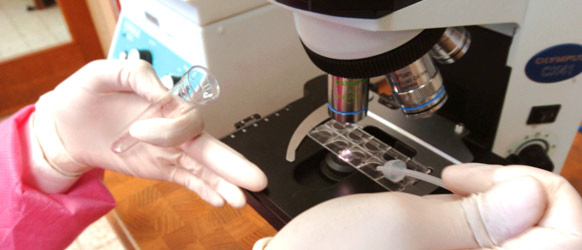Urinalysis

A urinalysis is a urine test. A urinalysis may be used to detect and manage a variety of medical conditions like kidney disease, urinary tract infections (UTI), and diabetes.
A urinalysis is a three-part test that looks at:
1. Appearance (what the urine looks like)
2. Concentration (how dilute is the urine)
3. Contents (what’s in the urine)
Why is a urinalysis done?
A urinalysis may be done for many reasons, including:
Overall Health: Routine medical exams often involve a urinalysis to screen for a variety of medical conditions like diabetes, liver disease, and kidney disease. A urinalysis will be done at nearly every urology appointment because of the valuable info it provides.
Diagnosis: For patients experiencing flank pain, abdominal pain, frequent or painful urination, blood in urine (hematuria), a urinalysis is often necessary. Information in urine samples can help pinpoint the underlying cause of these symptoms.
Condition Management: If you’ve been diagnosed with a urinary condition, your urologist may recommend a urinalysis on a routine basis to monitor your progress.
How to Prepare for Urinalysis
In general, you do not have to prepare for a urinalysis. You may eat and drink as you normally would. A urinalysis is often done with other tests that may require fasting, so check with your healthcare provider to verify your instructions.
Some medications and supplements can affect the results of a urinalysis. Be sure to tell your doctor about any supplements, vitamins, or medications you’re taking. This includes over-the-counter medications.
Urinalysis – What to Expect / Instructions
Typically, a healthcare professional will provide you with a small container for the urine sample.
You will be asked to enter a private restroom and provide 1-2 oz of urine in the container for examination.
The instructions for collecting a urine sample will also be found in the restroom.
For Women:
- Part the labia to expose the vaginal opening
- Clean the area from front to back (towards rectum) with an antiseptic wipe.
- Urinate a little into the toilet
- While urinating, place the cup into the stream and collect until at least half full.
- Finish urinating into the toilet
- Place the cap on the cup and place in designated area.
For Men:
- Expose the penis head and clean around the opening with an antiseptic wipe.
- Urinate a little into the toilet
- While urinating, place the cup into the stream and collect until at least half full.
- Finish urinating into the toilet
- Place the cap on the cup and place in designated area.
Urinalysis Results
Urine samples are examined visually, with a dipstick/test strip, and with a microscopic.
Visual Examination
A healthcare professional will view the urine’s appearance for color and cloudiness. Cloudy urine could be a sign of an infection. This is sometimes accompanied by a strong odor.
If urine is red or brown, it could be due to blood in the urine (hematuria). Some foods can affect the color of urine, such as beets.
Urine Dipstick

A dipstick is a small, thin, plastic device that has chemicals on the surface. These chemicals react and change color if abnormalities are present in the urine. A urine dipstick can check:
Acidity (pH): pH level indicates the amount of acid in urine. Abnormal results could be signs of a kidney or urinary tract issue.
Concentration: This test shows how concentrated the particles are in urine. A high concentration is often associated with dehydration.
Protein: Protein is common in urine, but high levels could indicate a kidney problem.
Sugar: Sugar is typically too low to measure in urine. If sugar is detected, your doctor may recommend additional tests for diabetes.
Ketones: Similar to sugar, if keytones are measurable in urine, your doctor may recommend additional tests for diabetes.
Bilirubin: Bilirubin is an orange-yellow pigment formed in the liver by the breakdown of hemoglobin. Normally it’s processed by your liver and turned into bile. The presence of bilirubin in urine could be a sign of liver damage or disease.
Infection: The presence of nitrates or leukocyte esterase are found in urine, it could indicate a urinary tract infection.
Blood: Blood in the urine could be a sign of kidney damage, infection, disease, bladder stones, kidney cancer, bladder cancer, or blood disorder.
Microscopic Urine Exam

For the microscopic exam, several drops of urine are placed on a slide to be viewed under a microscope. Your healthcare professional will be looking for abnormal levels of:
Leukocytes: Leukocytes in urine (white blood cells) could indicate an infection.
Erythrocytes: Erythrocytes in urine (red blood cells) could indicate kidney disease or an underlying condition like bladder cancer.
Yeast or Bacteria: Bacteria or Yeasts in the urine could indicate an infection.
Crystals: Crystals in urine could indicate kidney stones.
Casts: Urinary casts are microscopic cylindrical structures produced by the kidney and if present, could be a sign of kidney problems.
Urinalysis Diagnosis
A urinalysis is typically performed with other diagnostic tests and exams. Alone, a urinalysis rarely provides all the information needed to make a definitive diagnosis.
If you have questions about your urinalysis results, please talk to your medical provider.
